#nama
Text
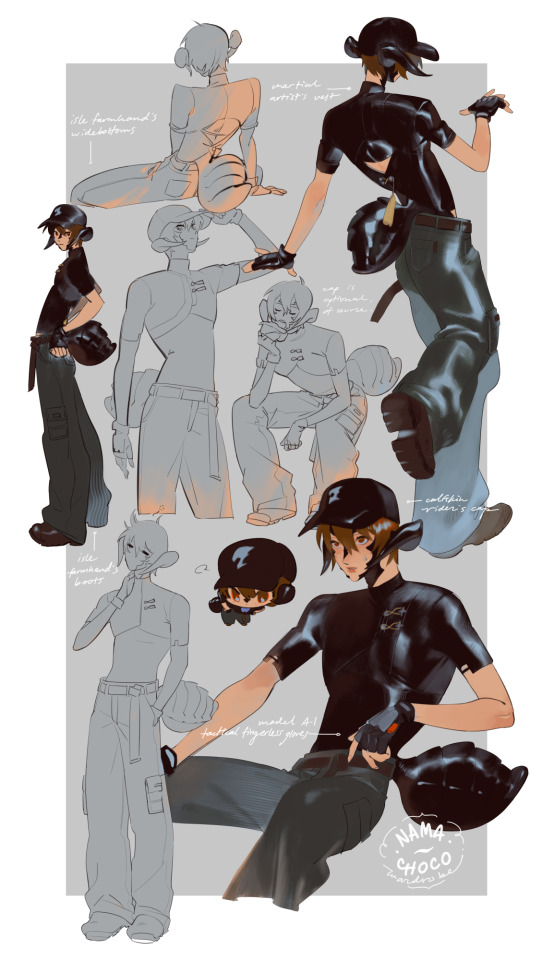
obsessed with this top on my lizard 🦎🦎🤎
163 notes
·
View notes
Text
Is Germany’s other genocide being forgotten? | The Listening Post
youtube

#germany#europe#namibia#history#genocide#no pride in genocide#herero#nama#class war#oppression#oppressor#free all oppressed peoples#pedagogy of the oppressed#oppressive#repression#ausgov#politas#auspol#tasgov#taspol#australia#fuck neoliberals#neoliberal capitalism#anthony albanese#albanese government#colonialism#colonial violence#colonial america#colonization#colonizers
11 notes
·
View notes
Text
THREE FORBIDDEN BOOKS -BOOK-





<GENRE>
A RPG where the demons are just going wild.
RPG Game
There is only horror in one part.
<SPECIFICATIONS>
Chase Sequences: None.
Battles: A lot.
<CONTENT WARNING>
Blood and gore, language, suggestive themes and violence.
<PLAYTIME>
70 hours <-- X (The author is not very good at this.)
About 20 hours
<NUMBER OF ACHIEVEMENTS>
5
*You can see the last NG scene depending on the number of achievements.
<ENDINGS>
Only one.
Difficulty level cannot be set.
<PRODUCTION TIME>
6 years
^Including skipping period
English Translation:
https://drive.google.com/file/d/1GXsA0ShnACORK4YwpLH_QaC9_rR6KFOp/view?usp=sharing
Japanese Version:
https://www.freem.ne.jp/win/game/12509
12 notes
·
View notes
Photo

The Quest for Buddhism (116)
Buddhist cosmology
Vippasana meditation
Vipassana meditation (vipassana-bhavana) is a meditation (bhavana Ref1) in which one gains insight into impermanence, suffering and non-self, which are considered truths in Buddhism, by observing nāma (mental action) and rūpa (matter).
Namarupa (Ref) is used in Buddhism to refer to the constituents of a living being: nama is typically considered to refer to the mental component of the person, while rupa refers to the physical.
Vipassana means 'to observe'. It also means 'to see separately' or 'to see things as they are'.
Vipassana emerged around the 6th century, when Mahayana Buddhism was expanding with the trade from India to South-East Asia.

仏教の探求 (116)
仏教の宇宙論
ヴィパッサナー瞑想
ヴィパッサナー瞑想 (巴:ヴィパッサナー・バーヴァナー)は、ナーマ (こころのはたらき) とルーパ (物質) を観察することによって、仏教において真理とされる無常・苦・無我を洞察する瞑想 (バーヴァナー 参照1)である。
ナーマルパ (名色: みょうしき参照) は、仏教において、生物を構成する要素を指す言葉として用いられる。ナーマ(名)は一般に、その人の精神的要素を指し、ルーパ(色)は肉体的要素を指すと考えられている。
ヴィパッサナーは「観察する」を意味する。また「分けて観る」、「物事をあるがままに見る」という意味である。
ヴィパッサナーはインドから東南アジアへの貿易に伴い、大乗仏教 (だいじょうぶっきょう、梵: マハーヤーナ)が拡大していた6世紀頃誕生した。
#vippasana meditation#buddhism#mahayana#nama#rupa#namarupa#buddhist cosmology#mindfulness#philosophy#zen#nature#art
113 notes
·
View notes
Text

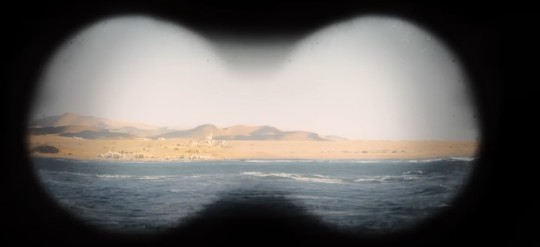
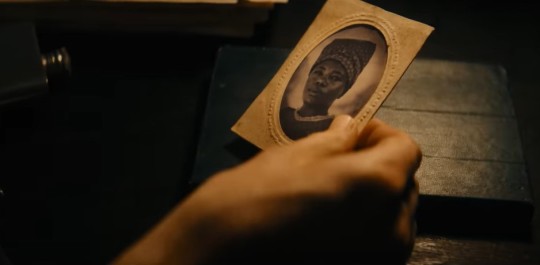

Der vermessene Mensch (2023) - Lars Kraume
Sie werden sehr viele schöne Dinge zurücklassen auf ihrer Flucht.
#der vermessene mensch#measures of men#lars kraume#Girley Charlene Jazama#Leonard Scheicher#film#herero#nama#colonialism#german film#film still#watched on the flight STL FRA#watched in december 2023#german colonialism
5 notes
·
View notes
Text


absolutely fucking nothing in these gay little girl brains
#mimi#nama#splatoon oc#splatoon#original character#oc#oc art#inkling#octoling#my art#carpel tunnel speedrun
49 notes
·
View notes
Text


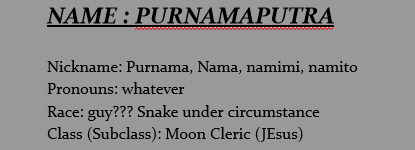
my (not really) yuan ti baby 🥺
#nama#dnd character#dnd oc#yuan ti#(mechanically. its complicated)#my god i love this bitch so much#a few sessions in now and they are learning not to be a scaredy-cat#feat an actual snippet from my chaotic character notes#if you noticed i stole the ffxiv au ra scale pattern. i did and im not sorry
5 notes
·
View notes
Text








🌟 Attention, Everyone! 🌟 @NAMA
🎉The stage is set, the machines are humming, and we're ready to rock your world at The NAMA SHOW 2024 in Dallas!
🚀✨Trust us, you won't want to miss it!
#GetReadyToBeAmazed #TCNVending #TheNAMASHOW2024 #VendingInnovation #DallasEvent #SaveTheDate #thenamashow #namashow #nama #tcnvendingmachine #tcnveding #vendingmachine #vendingmachinebusiness #combovendingmachine #drinkvendingmachine #icecreamvendingmachine #coffeevendingmachine #vapevendingmachine #frozenvendingmachine #coolervendingmachine #micromarket #micromarketivendingmachine #freshfoodvendingmachine #SmartFridge #SmartCooler
#GetReadyToBeAmazed#TCNVending#TheNAMASHOW2024#VendingInnovation#DallasEvent#SaveTheDate#thenamashow#namashow#nama#tcnvendingmachine#tcnveding#vendingmachine#vendingmachinebusiness#combovendingmachine#drinkvendingmachine#icecreamvendingmachine#coffeevendingmachine#vapevendingmachine#frozenvendingmachine#coolervendingmachine#micromarket#micromarketivendingmachine#freshfoodvendingmachine#SmartFridge#SmartCooler
2 notes
·
View notes
Text


happy new yuri 🥳
117 notes
·
View notes
Text

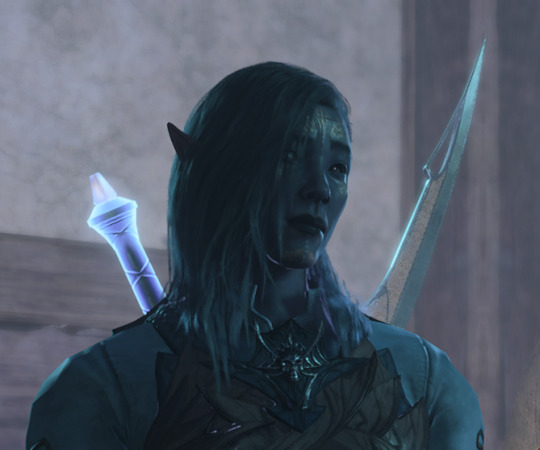
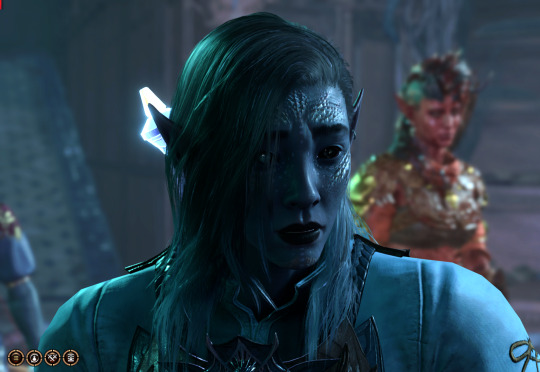
100 hours into the game and i finally figured out how to multiclass, so they have their scales now 🥹
#technically i could just respec into drac sorceror but i actually really like playing cleric#having fun being op in act 2#bg3#nama#silly snake time :)
3 notes
·
View notes
Text

Purplemat (Nama demissum) and California goldfields (Lasthenia californica) in the Mojave Desert
Photo by Jack Dykinga
#purplemat#purple#purple flowers#california goldfields#lasthenia#nama#nama demissum#lasthenia californica#yellow#yellow flowers#purple and yellow#yellow and purple#mojave#mojave desert#desert#desert flowers#california desert#wildflowers#nature
9 notes
·
View notes
Text
And this is precisely why Namibia entered the chat. Y'all come see this audacity. 🤬
#namibia#german occupation of namibia#give the namibians their land back#yes it's theirs#german colonialism#no wonder they support isn'treal#all colonizers need to go#never forget#know your history#namibian genocide#herero#nama
2 notes
·
View notes
Text
Also reminder that germany acknowledged the genocide against the Herero and Nama people only in 2021, 117 years after they started it and they haven't compensated Namibia in any way yet
2 notes
·
View notes
Text
A Movie Confronts Germany’s Other Genocide
“Measures of Men” tells the story of the systematic massacre of Herero and Nama people in what is now Namibia. Its maker hopes the film will bring a debate about Germany’s colonial guilt into the center of society.

Leonard Scheicher, left, and Girley Jazama in “Measures of Men,” which tells the story of the Herero and Nama genocide in what now Namibia through the eyes of a German anthropologist.Credit...Julia Terjung/Studiocanal GmbH
By Thomas Rogers
Reporting from Berlin
March 31, 2023
Germany is often praised for its willingness to confront the darkest moments of its history, but in recent years, activists have pointed to a blank spot in the country’s culture of remembrance. Decades before the Holocaust, Germany perpetrated the 20th century’s first genocide: From 1904 to 1908, German colonial officials systematically killed tens of thousands of Herero and Nama people in what is now Namibia. This atrocity is little known outside academic circles, and there are few memorials or pop cultural depictions of those events.
Now, a new movie, “Measures of Men,” aims to change that and bring a debate about Germany’s colonial guilt into the center of society. The glossy film, directed by the German filmmaker Lars Kraume, tells the story of the killings through the eyes of a German anthropologist. Aside from playing in movie theaters, where it opened last week, “Measures of Men” had a special screening for lawmakers in Germany’s Parliament, and was the focal point for a series of events at the Humboldt Forum, a central Berlin museum housing ethnological items. Its distributor, Studiocanal, said in a statement that it was planning to show the film in school and educational contexts.
“Measures of Men” has also prompted a new discussion in the German media about what many see as Germany’s sluggish attempts to come to terms with its colonial past. In recent years, the country has moved to return numerous artworks acquired during the colonial period, but the process of ratifying a reconciliation agreement between Namibia and Germany has stalled, and thousands of African human remains, transported to Germany from its colonies, remain in institutional collections.
In an interview in Berlin, Kraume, 50, explained that his movie was partly inspired by the 1978 NBC mini-series “Holocaust,” an early fictionalized TV depiction of the Shoah, which played a key role in spreading awareness of German guilt after it was broadcast here. “You have the possibility through cinematic storytelling to reach an audience that doesn’t engage so much with history books,” he said, adding that he hoped his film would be the first of many, much in the way “Holocaust” paved the way for films like “Schindler’s List.”

Lars Kraume, who directed “Measures of Men,” said, “You have the possibility through cinematic storytelling to reach an audience that doesn’t engage so much with history books.”Credit...Gordon Welters for The New York Times
“Measures of Men,” which was filmed in Berlin and Namibia, focuses on an ambitious German ethnologist (Leonard Scheicher) who develops a fascination with a Herero woman (Girley Jazama) after measuring her cranial features as part of his research. His fixation leads him to travel to German South West Africa (now Namibia), where he witnesses and eventually become complicit in the colonial slaughter.
“It’s not just a film about the genocide,” Kraume said, “but also about ethnologists who want to explore foreign cultures, but destroy them.”
Many of the scenes were based on real events of the genocide, which took place during a conflict between Germans and Africans known as the Herero and Nama War. After thousands of Herero men, women and children fled into the Omaheke Desert in 1904 to escape the fighting, German troops sealed off its edges and occupied the territory’s water holes, leading many to die of thirst. Lothar von Trotha, the governor of the colony, then issued a proclamation calling for all remaining Herero to be killed.
After the Nama joined the fight against the German colonizers, they were also targeted, and colonial officials set up concentration camps, ostensibly to provide labor for German-owned businesses, in which hundreds of prisoners died. The film depicts real facilities in one such camp in which the decapitated heads of Herero and Nama were boiled and cleaned for export to German ethnological institutions. Thousands of skulls of unclear origin remain in German collections to this day.
Kraume long wrestled with how to tell the story as a European filmmaker, and said he had decided to depict it from a German perspective for fear that centering it on African protagonists would represent a form of “cultural appropriation.” At one point in the development, he hoped to structure it similarly to Hollywood films about the Vietnam War, such as “Platoon” and “Apocalypse Now,” that center their plots on conflicts between “good” and “bad” American soldiers. “But there were actually no good Germans,” Kraume said.

Girley Jazama, who plays the movie’s female lead, discovered that her great-grandmother has been born in a German-run concentration camp while researching to play the role.Credit...Gordon Welters for The New York Times
Jazama, an acclaimed Namibian actress who plays Kezia Kambazembi, the film’s lead female role, learned German to play her part. In preparation for the role, she spoke to relatives about her family’s connection to the genocide and discovered that her great-grandmother had been conceived in a German-run concentration camp. “My ancestors need to be at peace,” she said in an interview. “That’s why I became a part of this story.”
Jazama said that, though the film had largely been made to spur discussion in Germany, it had also been a talking point in Namibia, where the events of the genocide had often been passed down via family members. “A lot of people are grateful,” she said, recalling that one audience member had shared appreciation that “now there is a visual representation of what happened, versus just it being told orally.”
The reaction in Germany has been more mixed. Writing in the Frankfurter Allgemeine Zeitung newspaper, the critic Bert Rebhandl wrote that the film focused too much on “German self-understanding” while pushing African perspectives to its edges. A writer in the Süddeutsche Zeitung argued that the film depicts too little of the genocide to transmit the scope of the killing and it does not do “justice to the horror.”
Henning Melber, a political scientist who has written extensively about German colonialism, said that criticism of the film shouldn’t distract from its potential role in remedying what he described as Germany’s “colonial amnesia.” He said that the film “triggers a debate in a wider German public in a way that none of us academics can achieve.”
Kraume emphasized that, although “Measures of Men” was meant to appeal to a mass audience, it was an explicitly “political film,” and that its rollout was partly engineered to spur a discussion. He hoped the screening for lawmakers would drive politicians to work harder at compensating the Herero and Nama, he added.
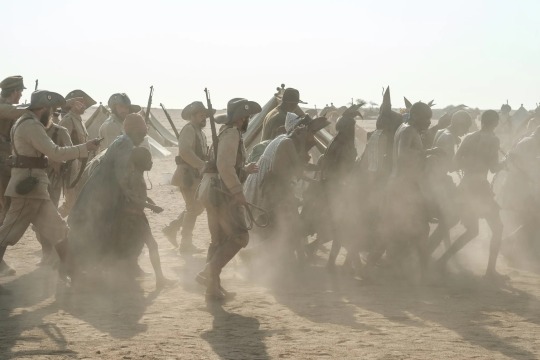
A scene from “Measures of Men.” In 1904, thousands of Herero people fled from German soldiers into the Omaheke Desert, where many died of thirst.Credit...Willem Vrey/Studiocanal GmbH
Although Namibian and German authorities agreed in 2021 on the terms of a reconciliation agreement, including around $1.1 billion in aid that Germany would pay over the next 30 years, the process has since come under fire from groups representing victims’ descendants, who argue that amount is too low, and say they were unfairly left out of the negotiation process. The Namibian government has since backtracked on plans to ratify the agreement, and the German authorities have resisted calls by the Namibians to reopen talks.
Kraume said Germany’s president, Frank-Walter Steinmeier, should travel to Namibia and officially apologize for the genocide, and that all human remains still held in Germany should be returned. “Europe has done far too little to reconcile with victims,” he said. “I think cinema allows us to awaken emotions, and implant images that can let you see events differently,” he said. “But this is only the beginning of the discussion.”
14 notes
·
View notes
Text
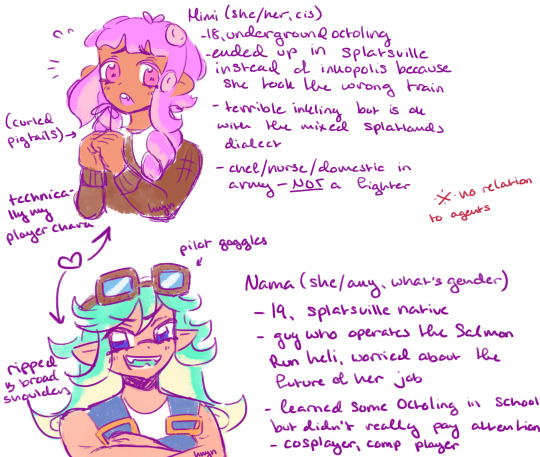
splatoon lesbian ocs sheet and now i will proceed to never draw these two ever again lol
#mimi#nama#splatoon#splatoon oc#inkling#inkling girl#octoling#octoling girl#oc#original character#oc ref#my art#splatoon 2#splatoon 3#carpel tunnel speedrun
24 notes
·
View notes
